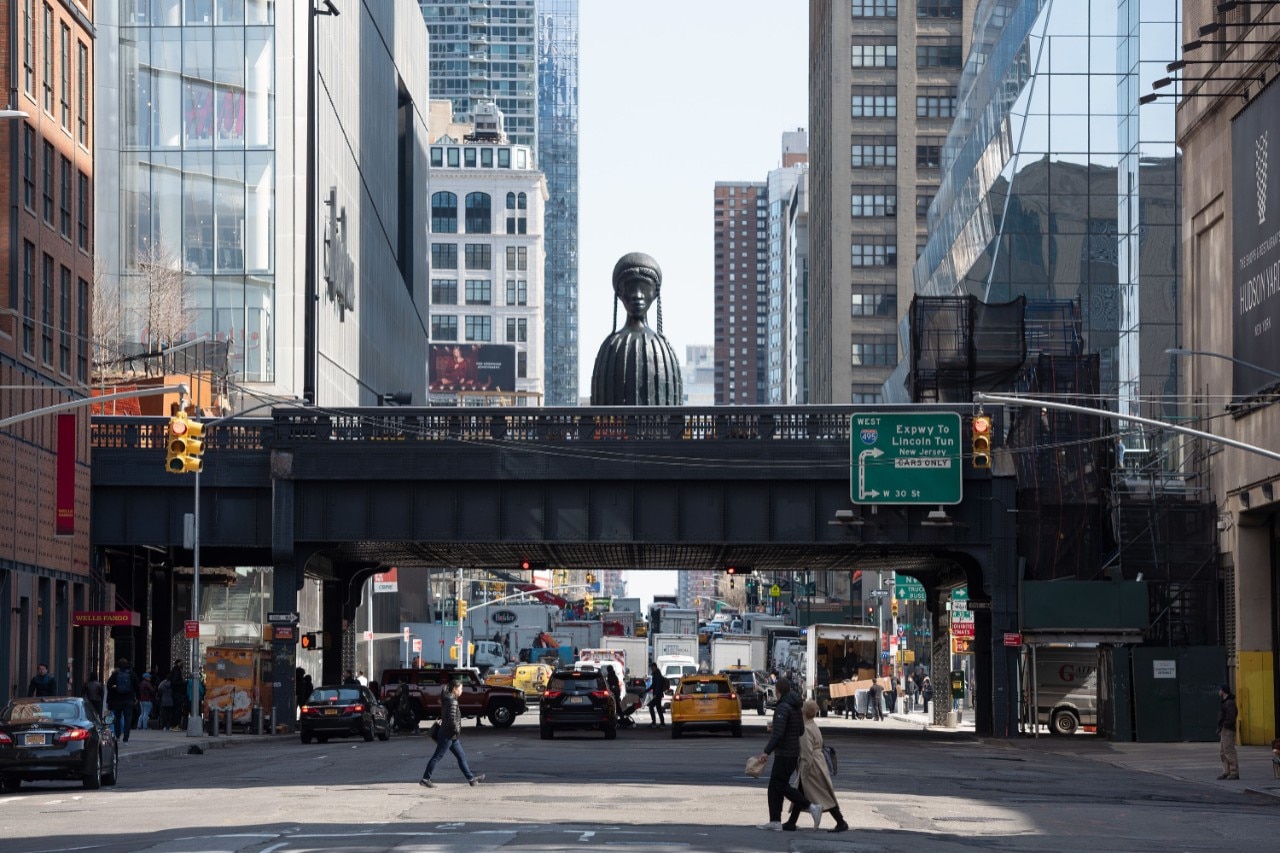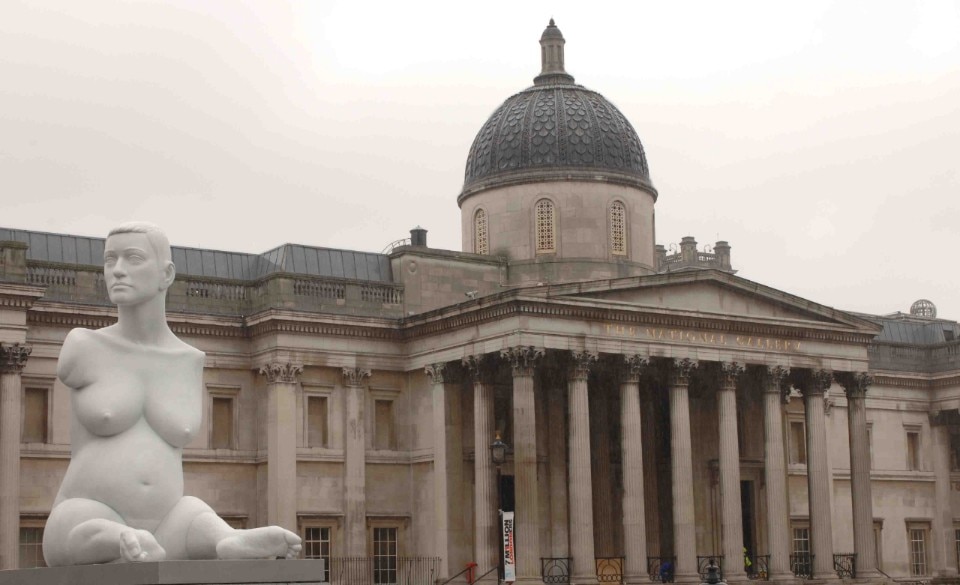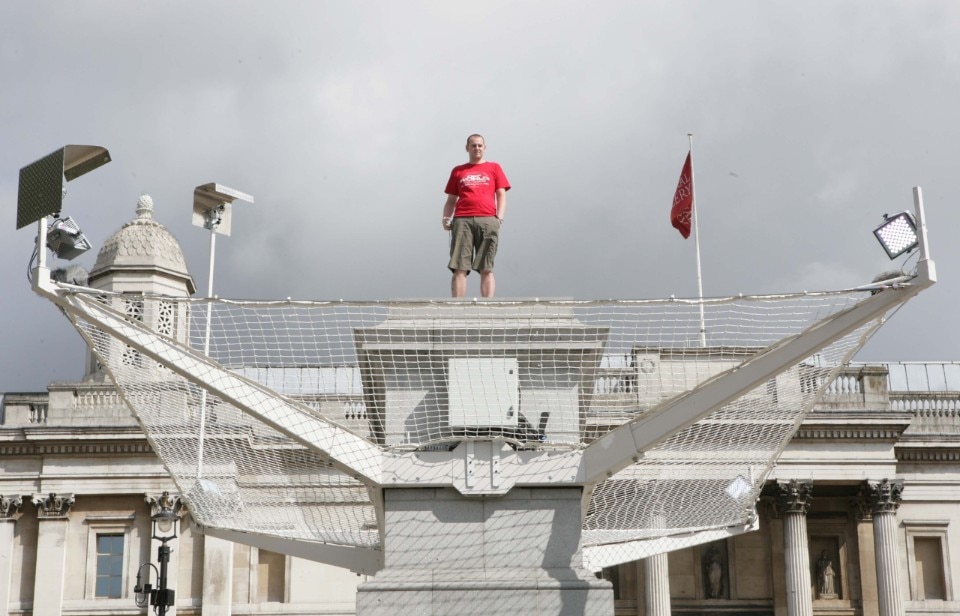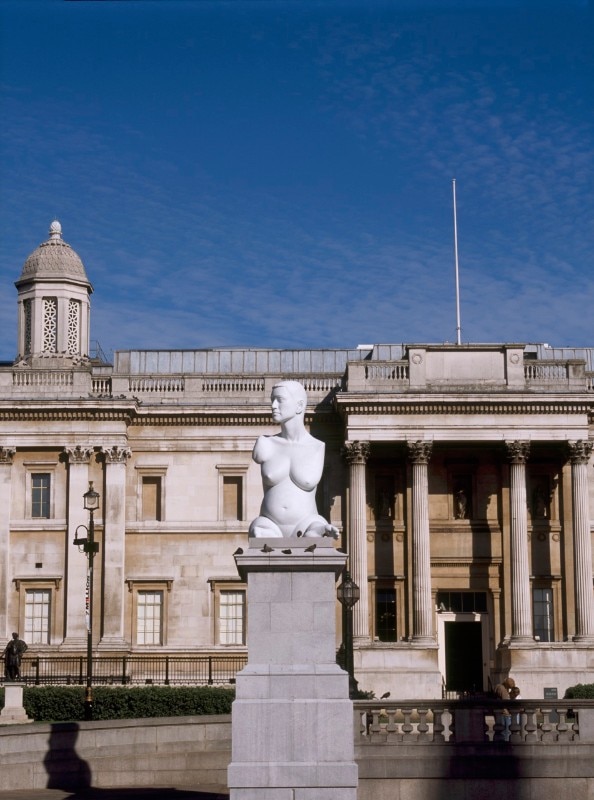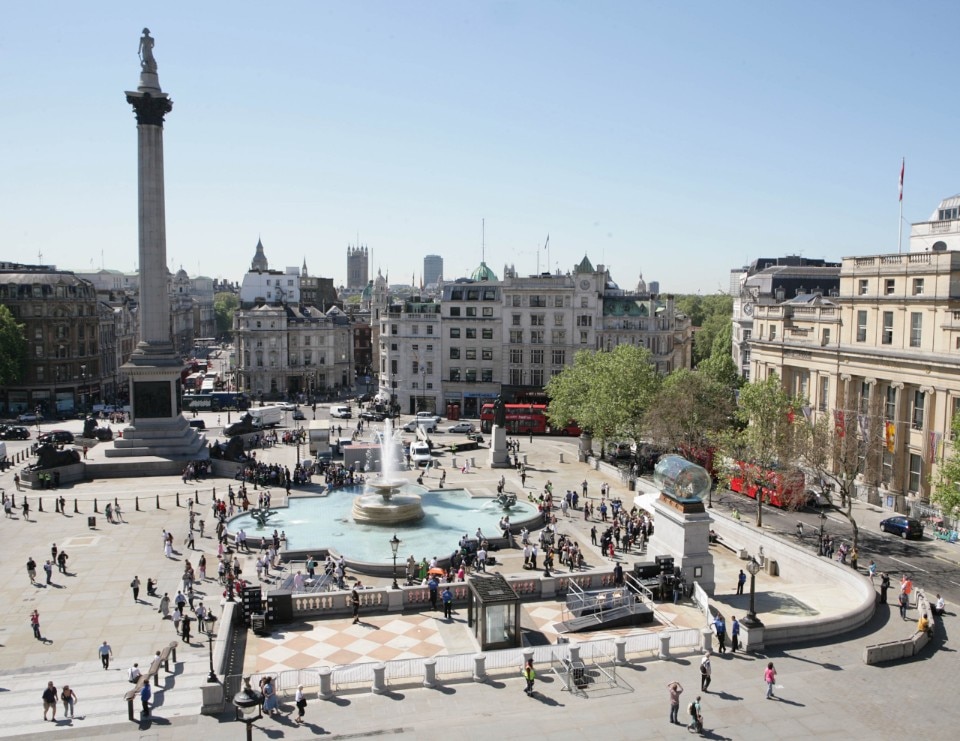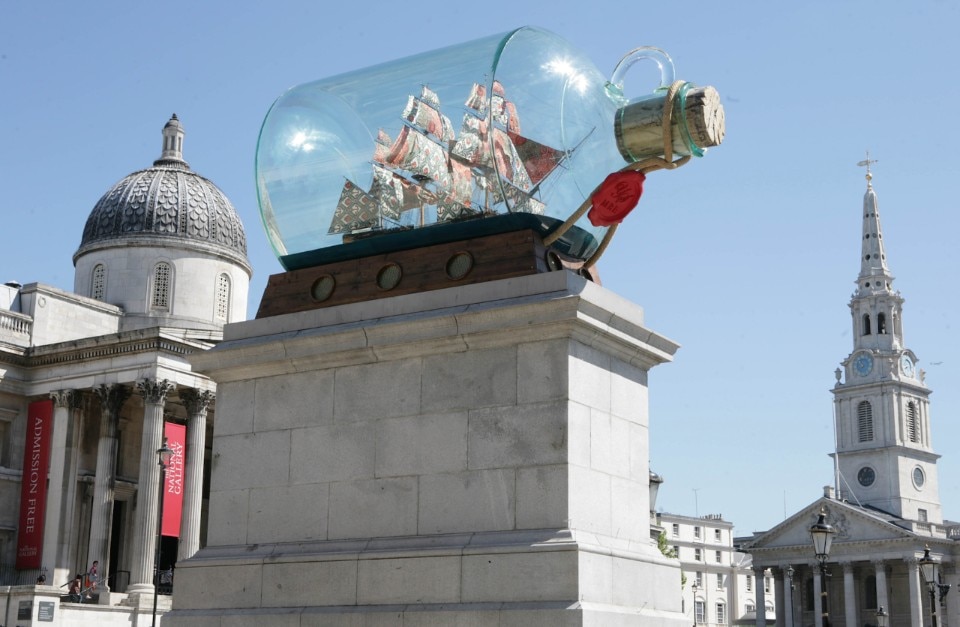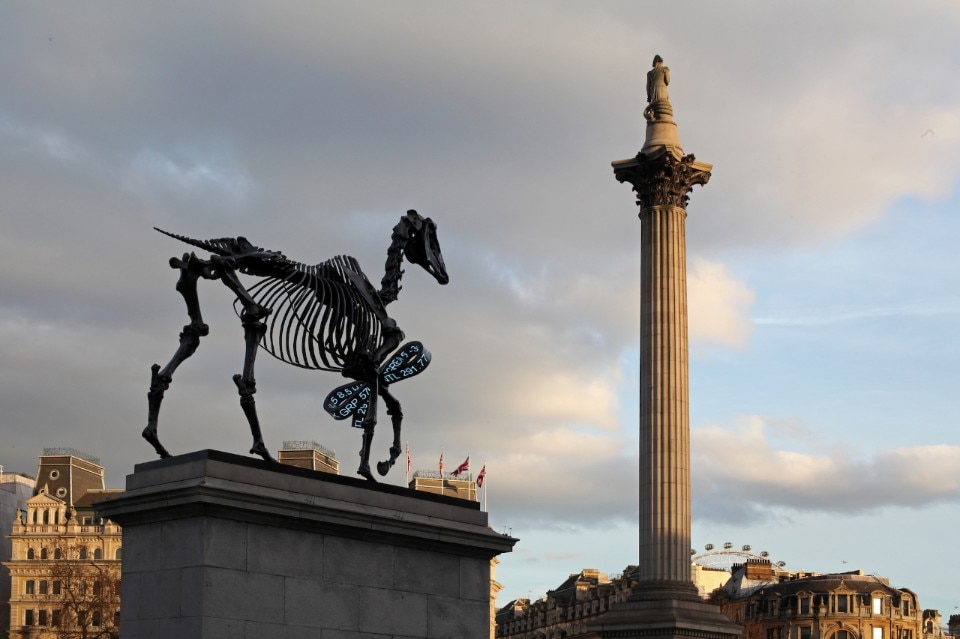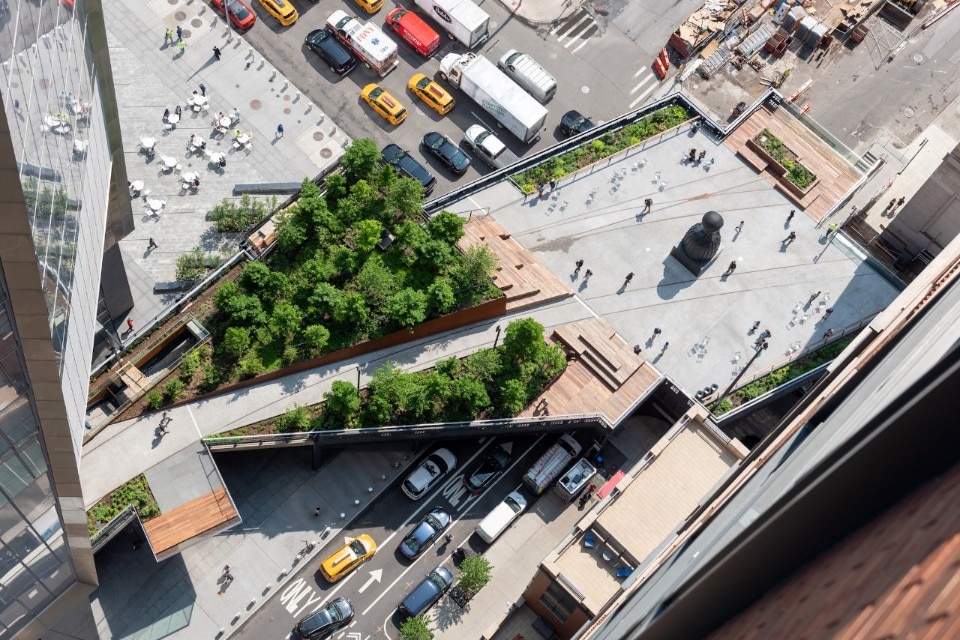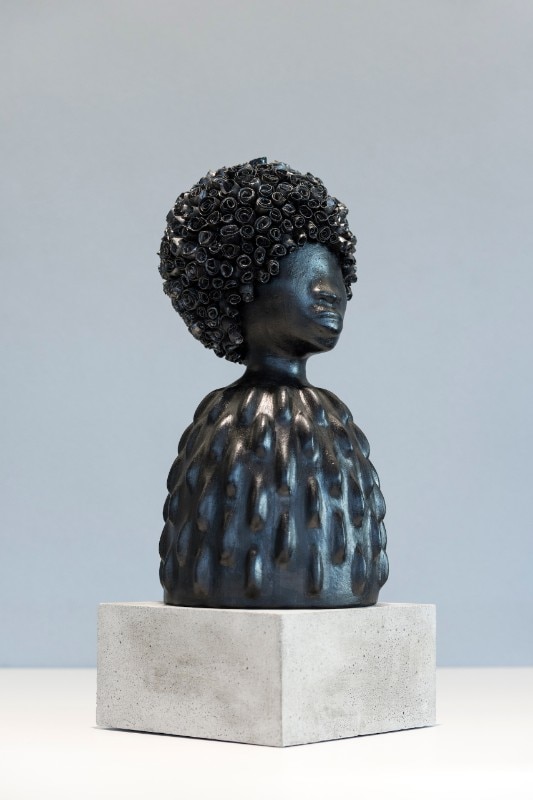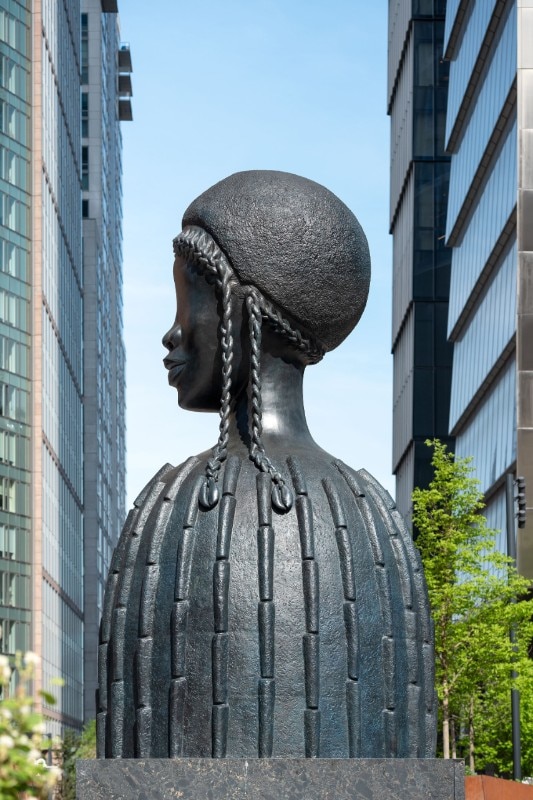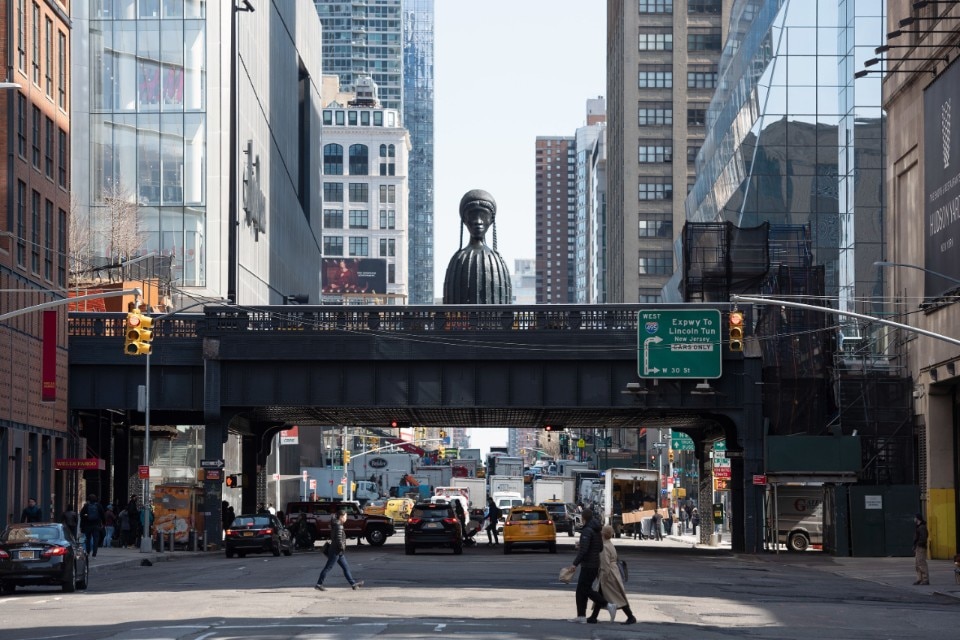The history of modern Western public art, according to Miwon Kwon’s fundamental reconstruction centred on the American scene, [1] can be briefly summed up as a process with three main phases: the placing of large sculptures in urban space in the 1970s, site-specific works in the late 1970s and 1980s, and more community-specific art since the 1990s. However, art in urban space also has a truly ancient history that goes back to Greek culture and Roman times. Familiar examples from art history are triumphal arches and equestrian monuments. This introduces the even more specific theme of monuments with a highly distinctive, often celebratory character (commemorating an event, public figure or dominant idea). In the historical layering of the metropolitan space, public art, whether contemporary or otherwise, plays a crucial role and today brings together many of the experiences cited above. The theme of the celebratory monument has resurfaced in the international debate as a symbol of an exclusive history, written by the victors.
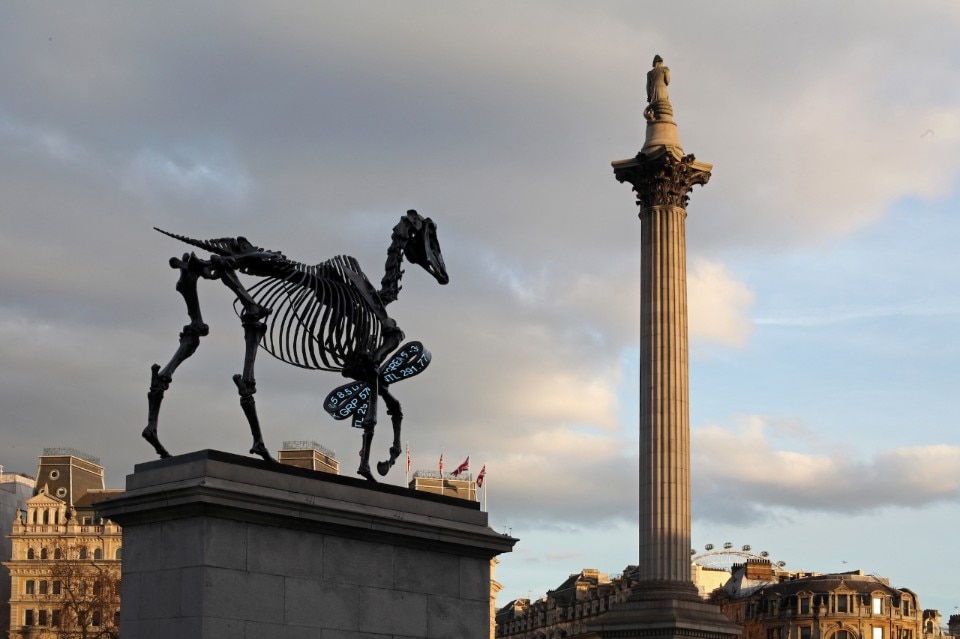
As the Black Lives Matter movement shows, it is a history that fails to represent social minorities. It is therefore evident that a monument’s implicit claims on posterity and eternity do actually have to reckon with the passing of time.
After the toppling of numerous sculptures and monuments (most recently by Black Lives Matter in the USA and the UK), in addition to the debate over the transfer of these works to museums and institutions, art is once again questioning its own role in the urban space. Arguably, one of the best answers still comes from a public art initiative dating from the late 1990s.
This is the Fourth Plinth Project in London’s Trafalgar Square, one of the city’s busiest spots where throngs of tourists mingle with Londoners and workers going about their everyday lives, and which is often a venue for grand popular gatherings.
At the four corners of the square stand four pedestals, three of them topped by 19th-century monuments to historical figures. But the fourth, designed in 1841 for an equestrian statue that was never made, stood empty for some 150 years.
In 1994 discussions began on how to occupy the plinth. After initially seeking suggestions from the public (which proved to be unsuitable) and lengthy negotiations, the Royal Society for the Encouragement of Arts, Manufactures and Commerce decided to follow the indications proposed by James Lingwood (co-director of the Artangel association), who suggested the plinth be used to display temporary works by contemporary artists selected by a committee.
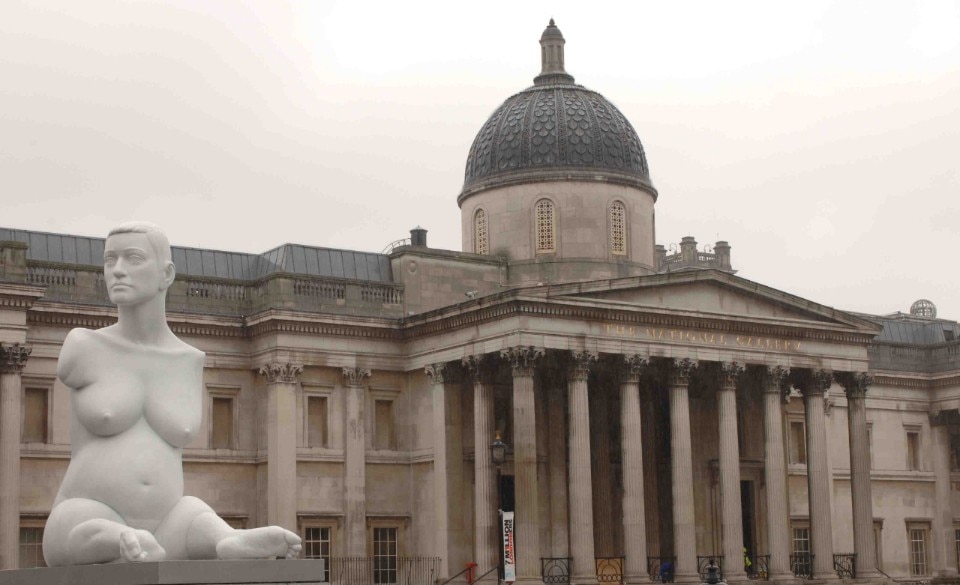
In 1998 the first three works were commissioned, and since 1999 thirteen sculptures have been installed on it by the artists Mark Wallinger (1999), Bill Woodrow (2000), Rachel Whiteread (2001), Marc Quinn (2005), Thomas Shütte (2007), Antony Gormley (2009), Yinka Shonibare (2010), Elmgreen & Dragset (2012), Katharina Fritsch (2013), Hans Haacke (2015), David Shrigley (2016), Michael Rakowitz (2018) and Heather Phillipson (2020). Some of these projects have prompted us to reflect in particular on the issues mentioned so far, such as Marc Quinn’s controversial sculpture Alison Lapper Pregnant, which represented a pregnant and naked disabled woman. Some felt it was shocking, while others saw it as a celebration of disability.
Then there was Antony Gormley’s work One & Other, which involved 2,400 people who for 100 days each took turns doing whatever they fancied on the plinth. In 2010 Yinka Shonibare created Nelson’s Ship in a Bottle, a 1:30 scale reproductionof HMS Victory, Nelson’s flagship in the 1805 Battle of Trafalgar. (Nelson’s statue stands at the centre of the square.)
Shonibare made the ship’s sails from African fabrics to evoke the theme of colonialism. It was followed in 2015 by Hans Haacke’s Gift Horse, the skeleton of a horse with an electronic ticker ribbon tied to its leg that tracked trading prices on the London Stock Exchange, highlighting the close ties between power, money and history. In 2018 Michael Rakowitz installed The Invisible Enemy Should Not Exist. The artist used empty date syrup cans (symbolising the destruction of Iraq’s date industry) to reconstruct a Lamassu sculpture dating from 700 BCE, which was destroyed by ISIS along with other exhibits in the Mosul Museum in 2015.
That the Fourth Plinth Project still represents one of the finest responses to the questions raised here was also demonstrated by the inauguration in 2019 of a new section of New York’s High Line called the Spur. At its centre is the Plinth, a pedestal on which a new work by a contemporary artist is to be installed every 18 months, chosen from a shortlist of projects.
As the curator Cecilia Alemani explains, this location has been conceived “as a place where people can come together, like a traditional European square, a type that is completely missing from Manhattan’s grid of streets and avenues. We felt that a large monument at its centre could help transform this space from a place of passage to one where people will linger and meditate.
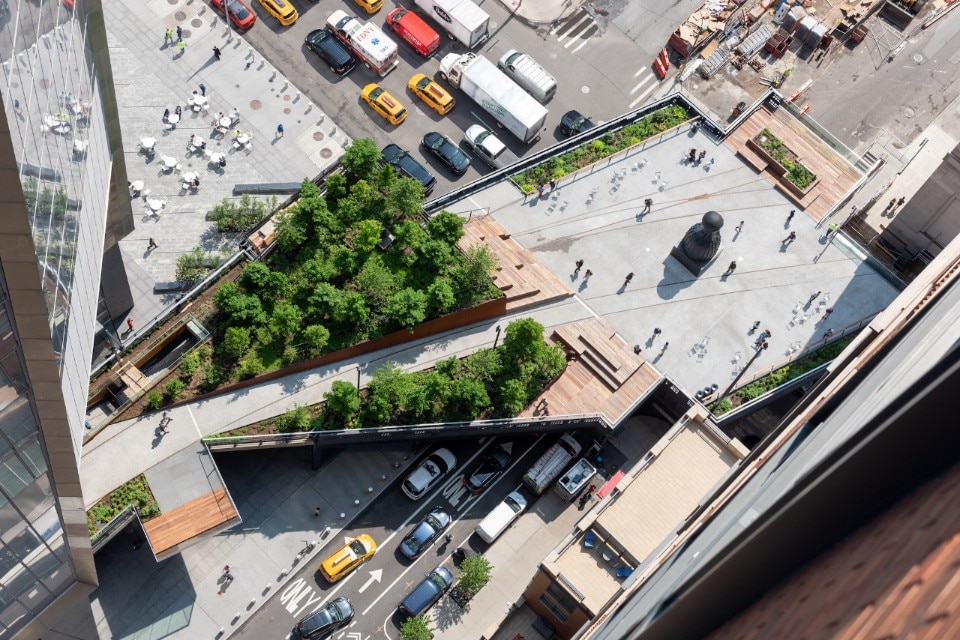
The Plinth functions as a focal point, like the space itself, and invites visitors to use this site in different ways: to stop, gaze and feel inspired. As for the way it’s used, we were inspired by London’s Fourth Plinth. I think it’s one of the most important public art programmes in the world, one that speaks to a broad public, beyond the boundaries of the art world.”
In 2019 there was heightened debate regarding the lack of representation of women and people of colour in public spaces. And accordingly, in the same period Brick House was unveiled on the Plinth of the Spur, a huge bronze sculpture by Simone Leigh. This monumental work confronts the vertical emphasis of the buildings around it, representing the bust of a black woman whose volume in the lower section combines the forms of a skirt with those of the clay houses typical of certain peoples in Togo, Benin, Cameroon and Chad. The sculpture is part of a series of works titled Anatomy of Architecture. As Eszter Salgò explains in her recent study, [2] it seems to invite us to reflect on the history of American architecture from a postcolonial perspective. Cecilia Alemani points out, “We have seen how the monuments that decorate our public spaces have been at the centre of very important discussions about who has the right to be commemorated, how history can be rewritten, and the very notion of a monument as something eternal. The Plinth fits into this discourse.”
We still need to ask ourselves about the role not just of art in public space, but about monuments in particular and whether there can be a celebration that is not only fair in the present, but has the power to be fair also in future.
This is what the High Line is doing, as it prepares to unveil the next project that will occupy the Plinth. What these two projects certainly tell us is that art in the city, like architecture, can be the driver of a critical activity that stimulates reflection even in a small space. It has no need to resort to striking gestures and dimensions. Just as a gemstone can irradiate its surroundings, so a sculpture can trigger a fundamental dialogue with its context. It can raise questions closely bound up with metropolitan history, culture and society, prompting awareness of issues that are crucial to the life of the community.
- [1]:
- Miwon Kwon, One Place after Another. Site-Specific Art and Locational Identity, MIT Press, 2002
- [2]:
- Eszter Salgò, Spiritualità e femminismo nero nell’arte pubblica di Simone Leigh, Postmedia Books, 2020


